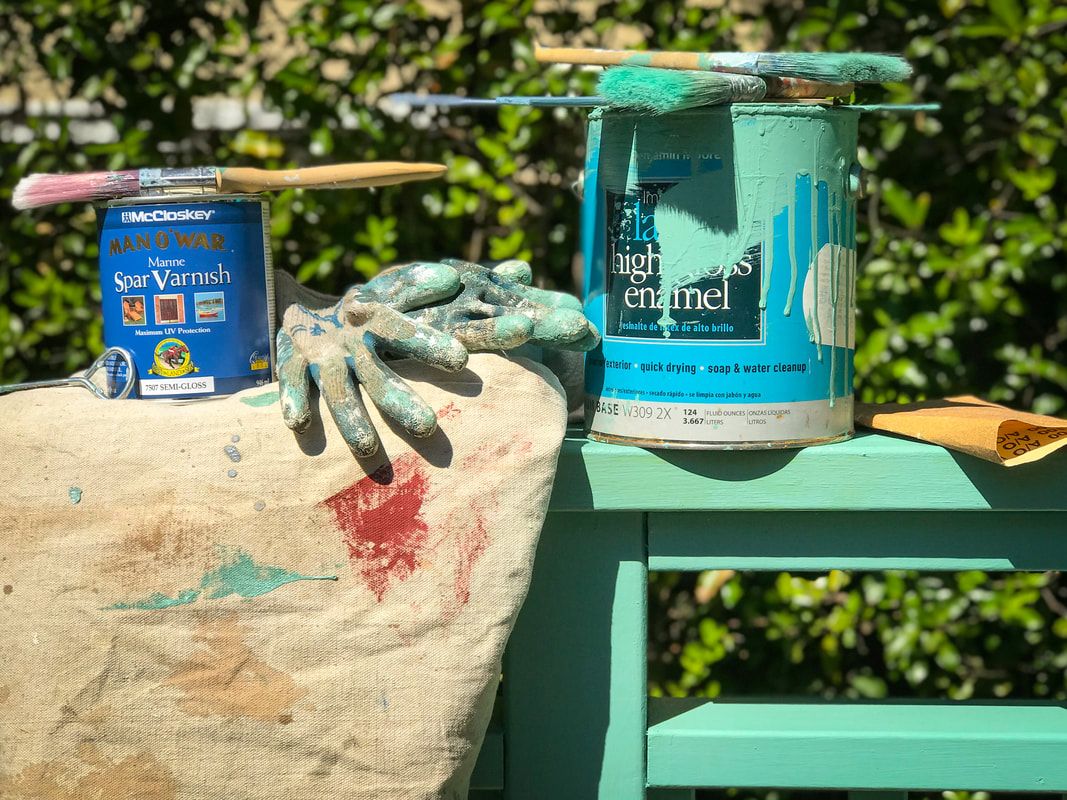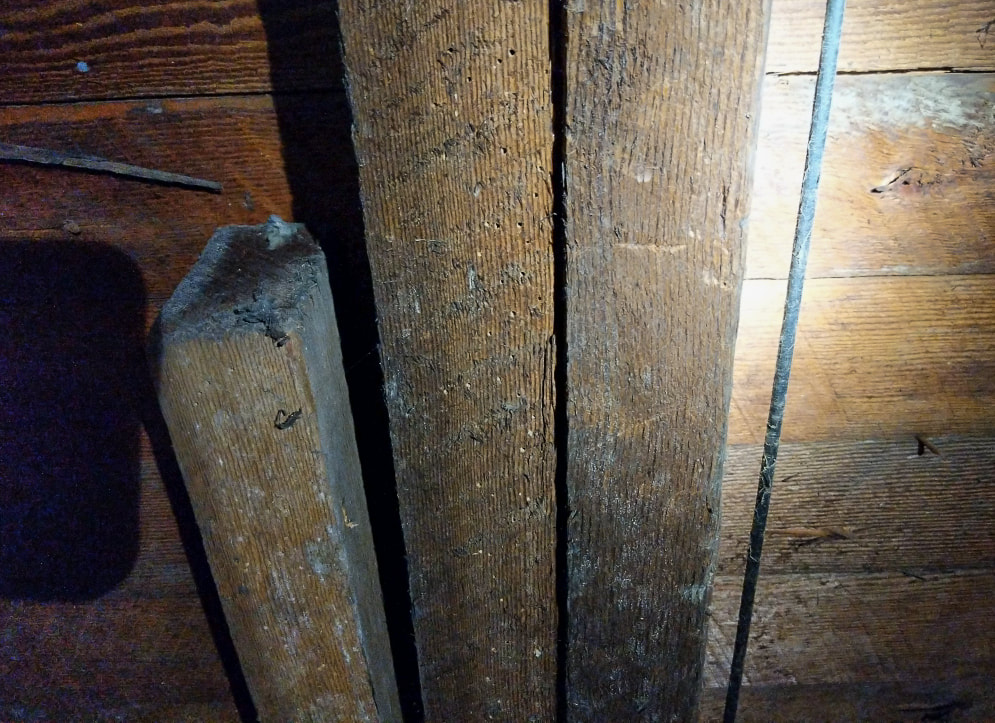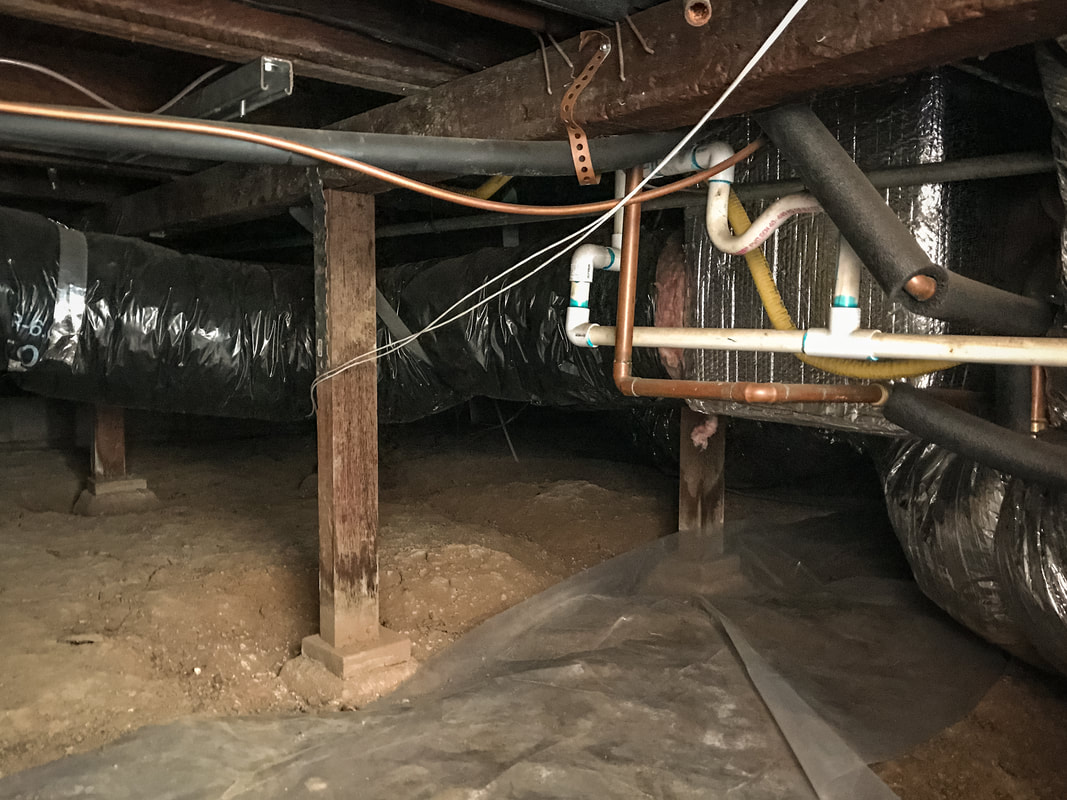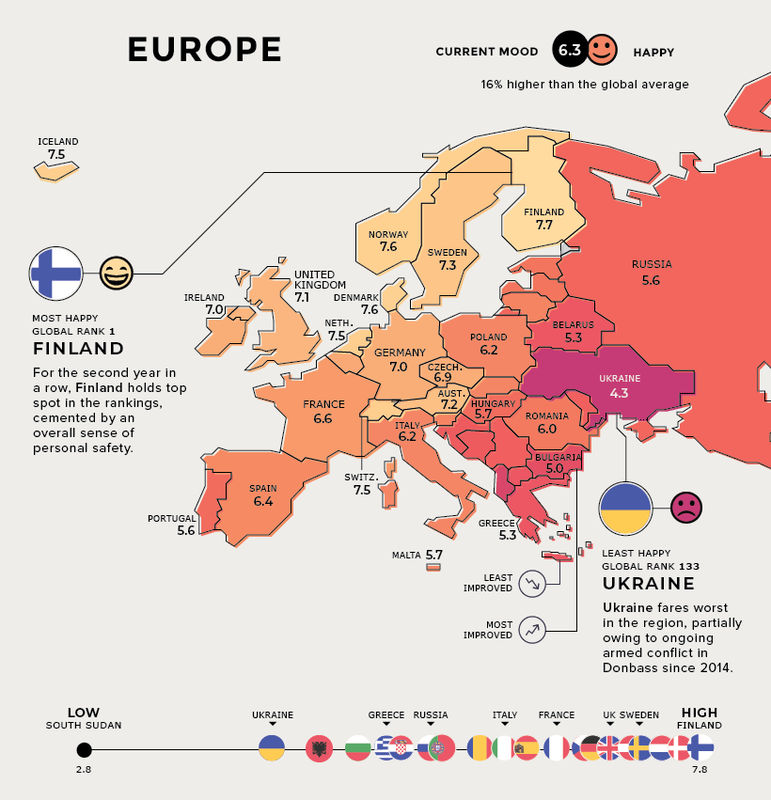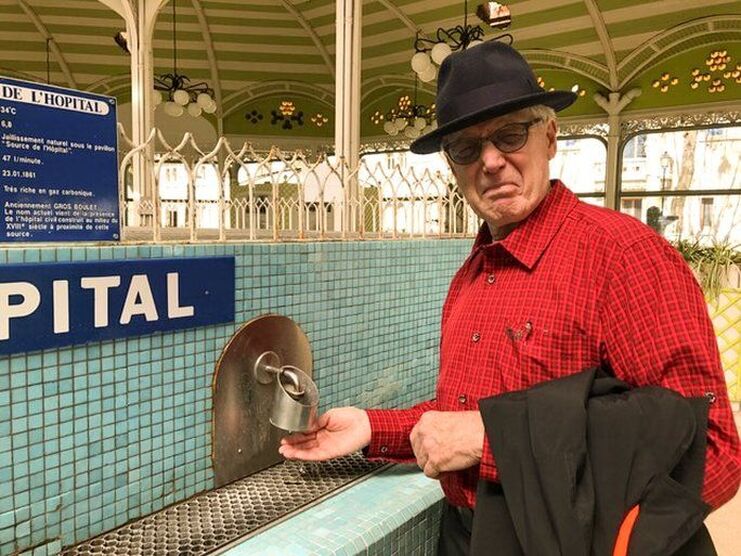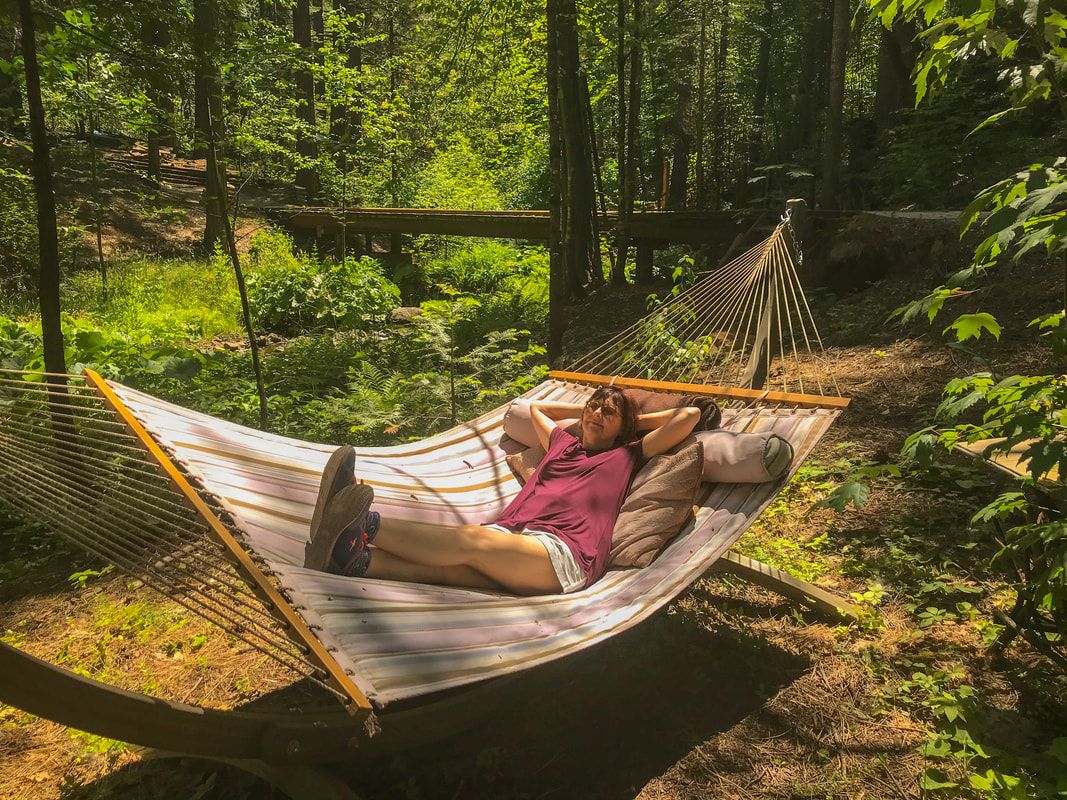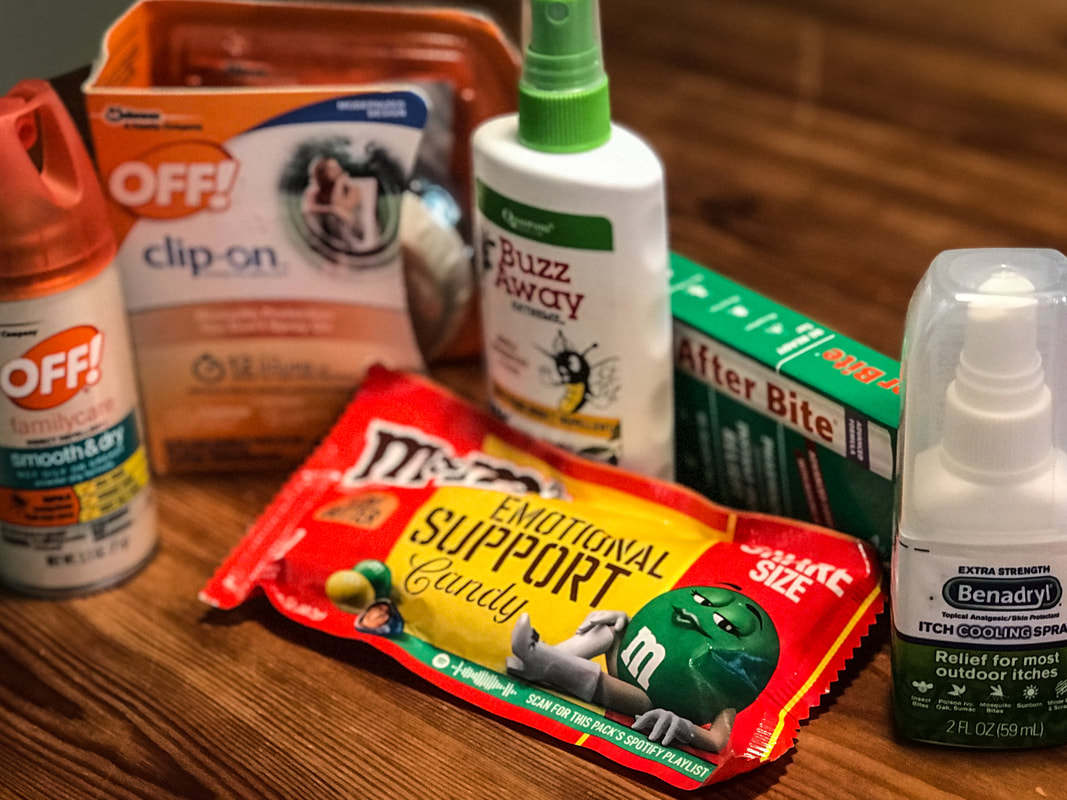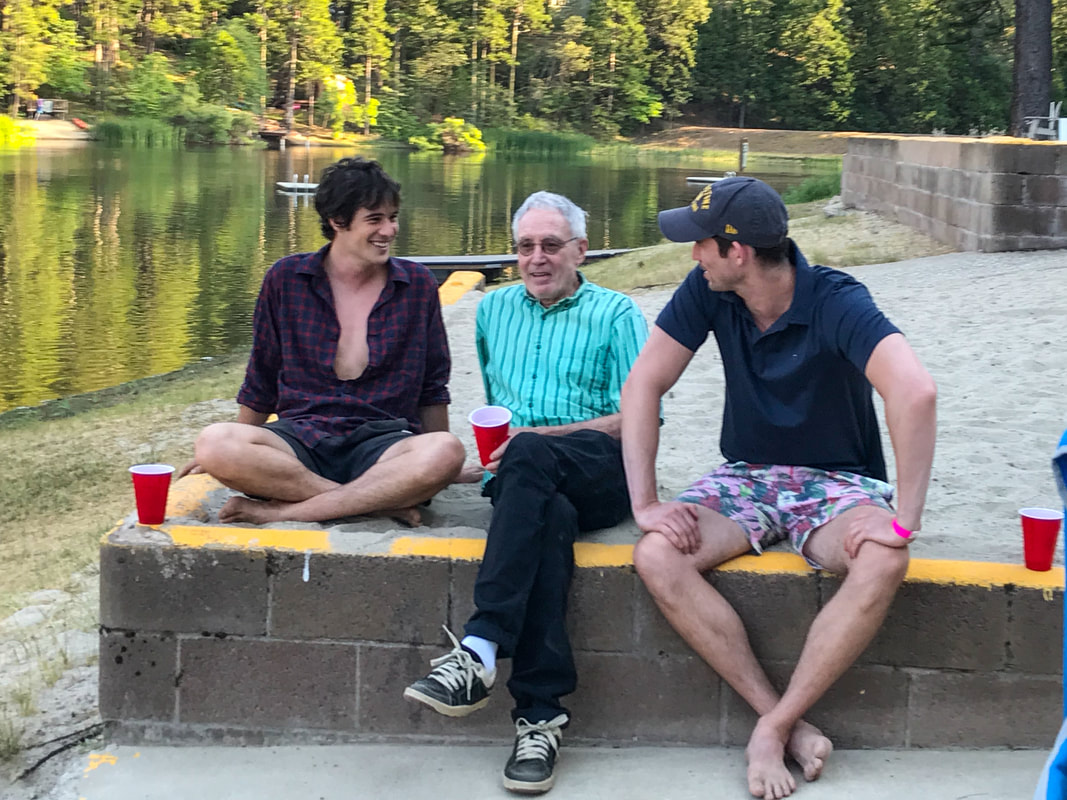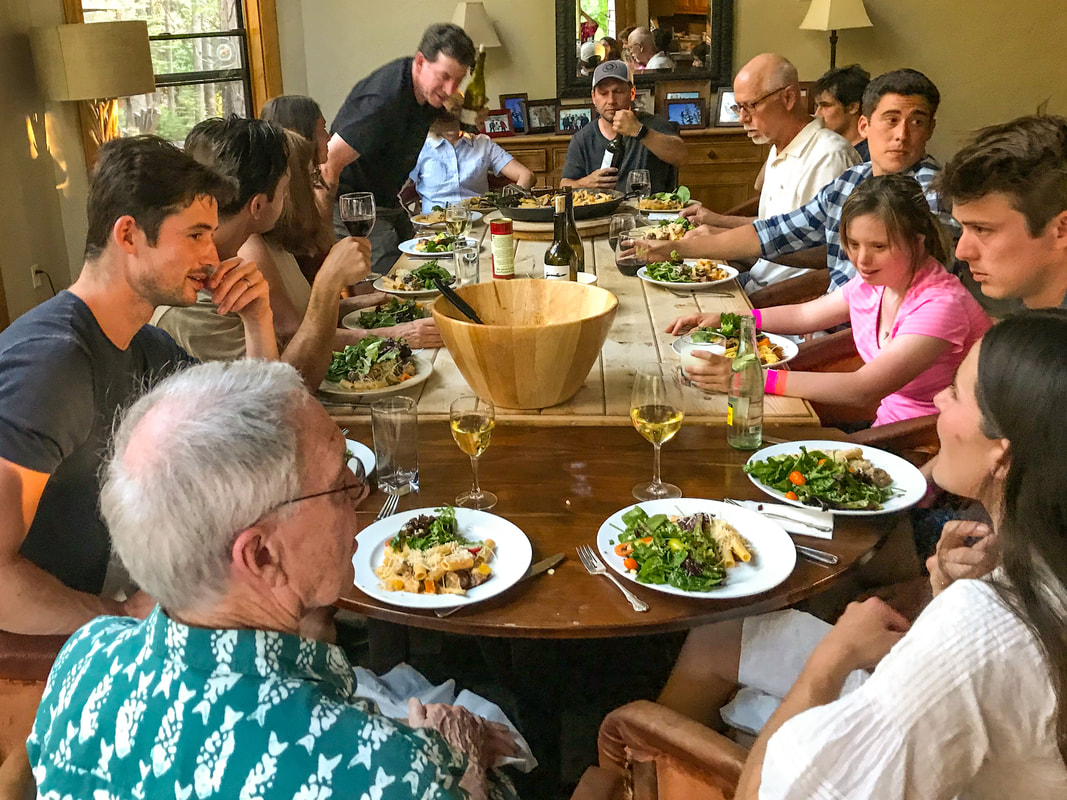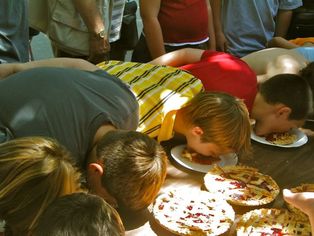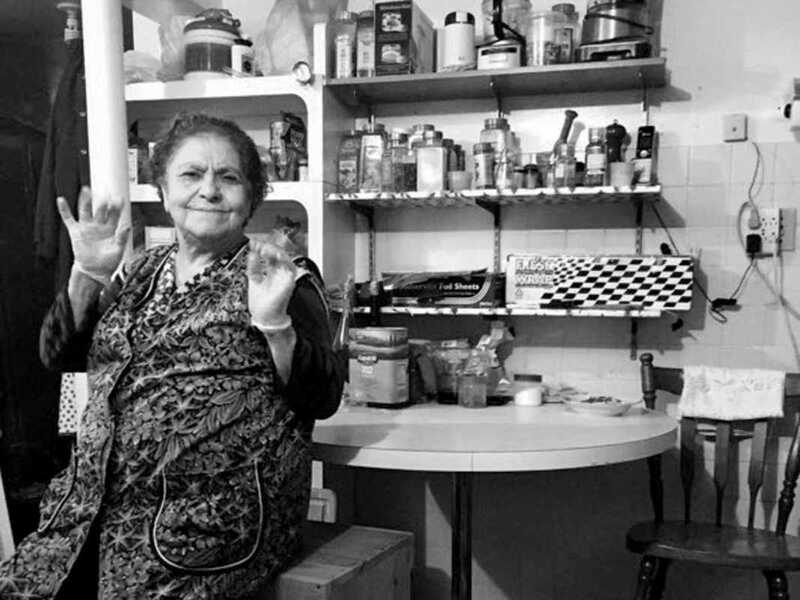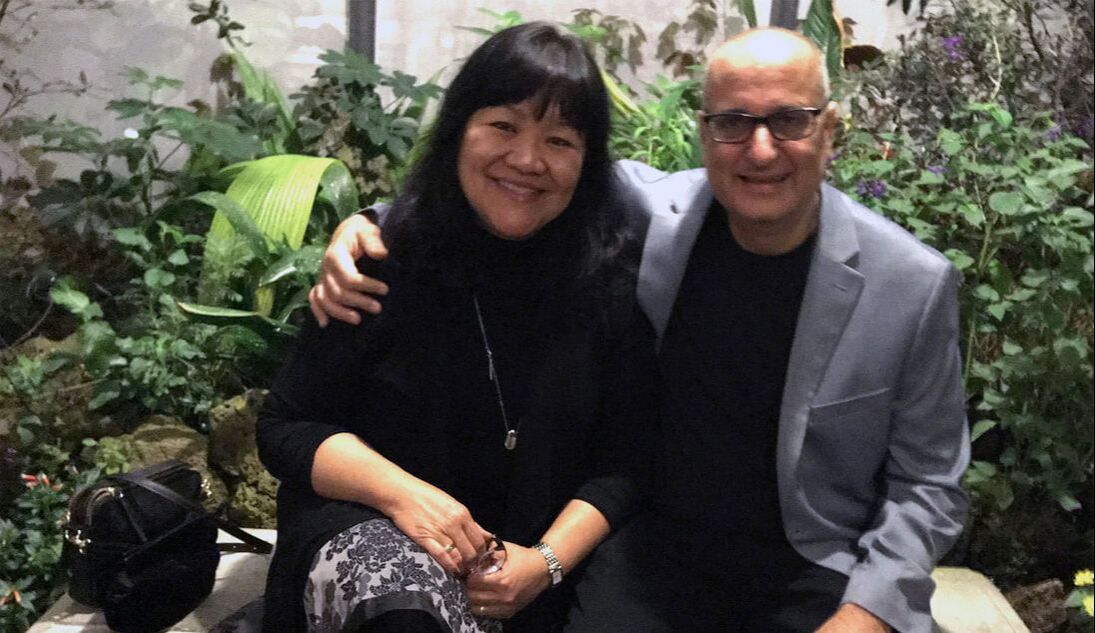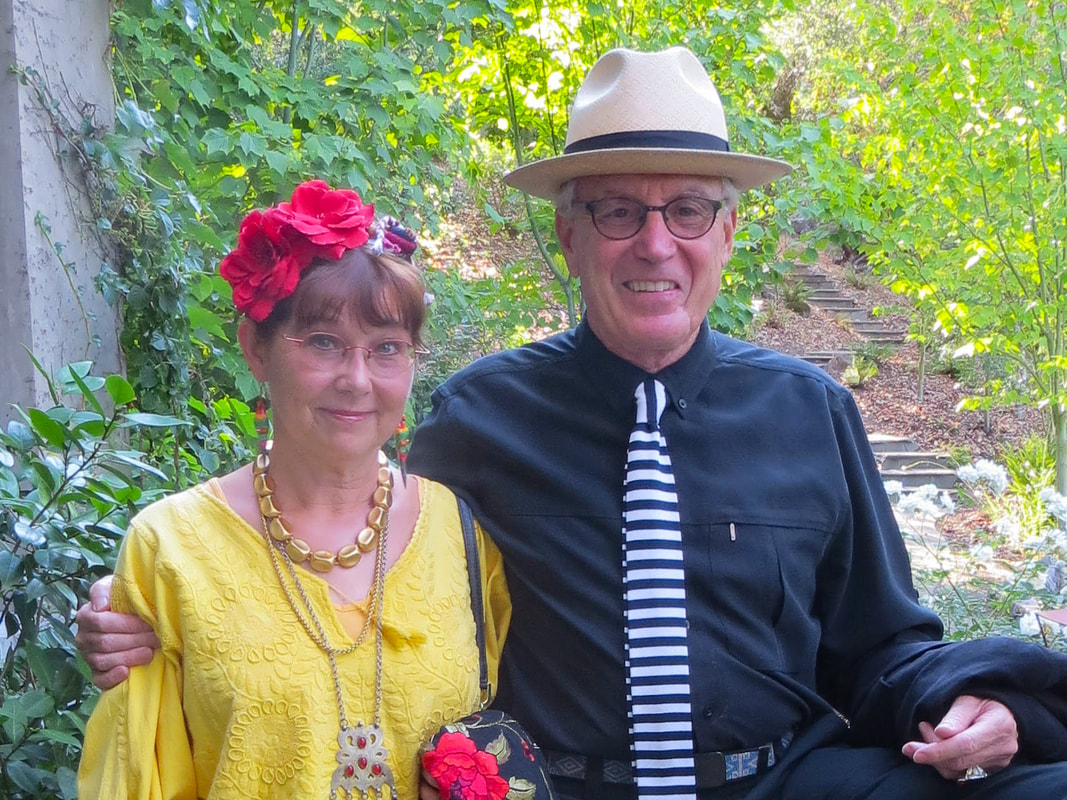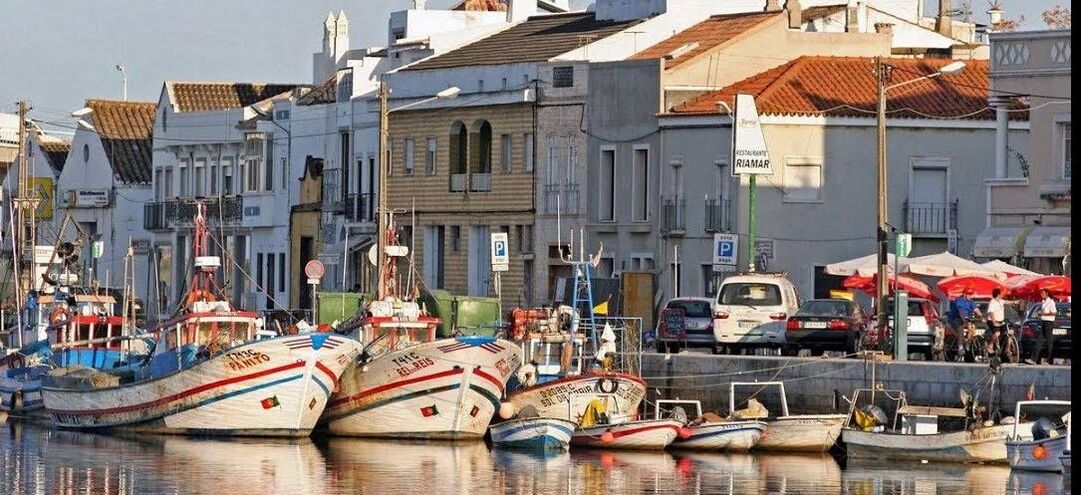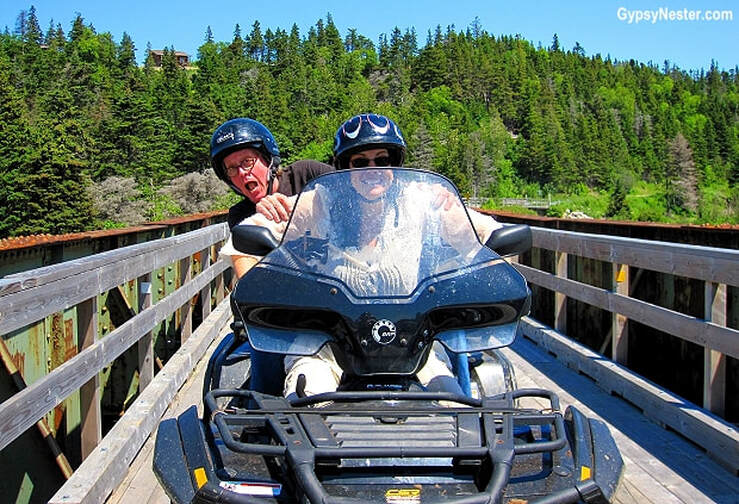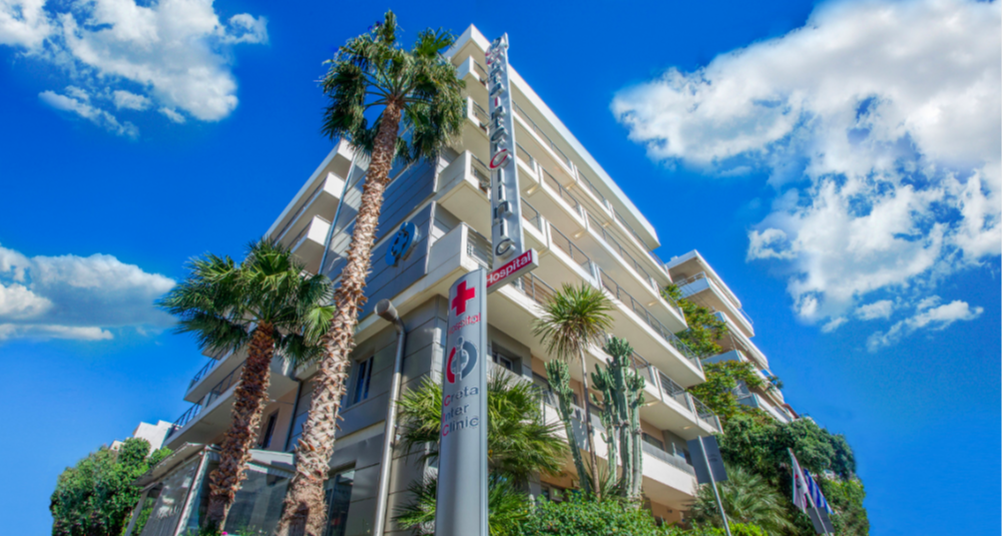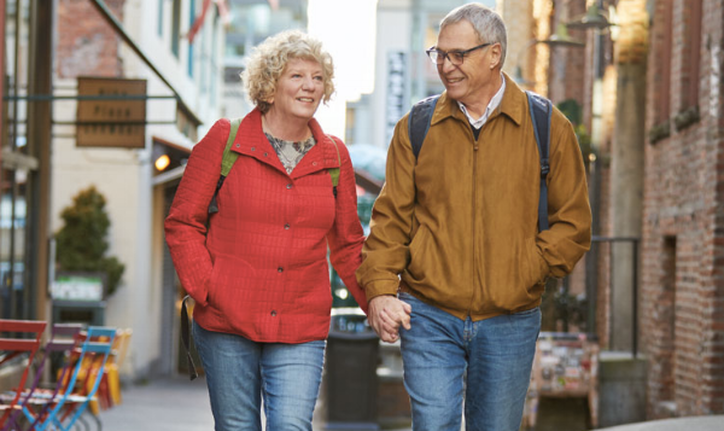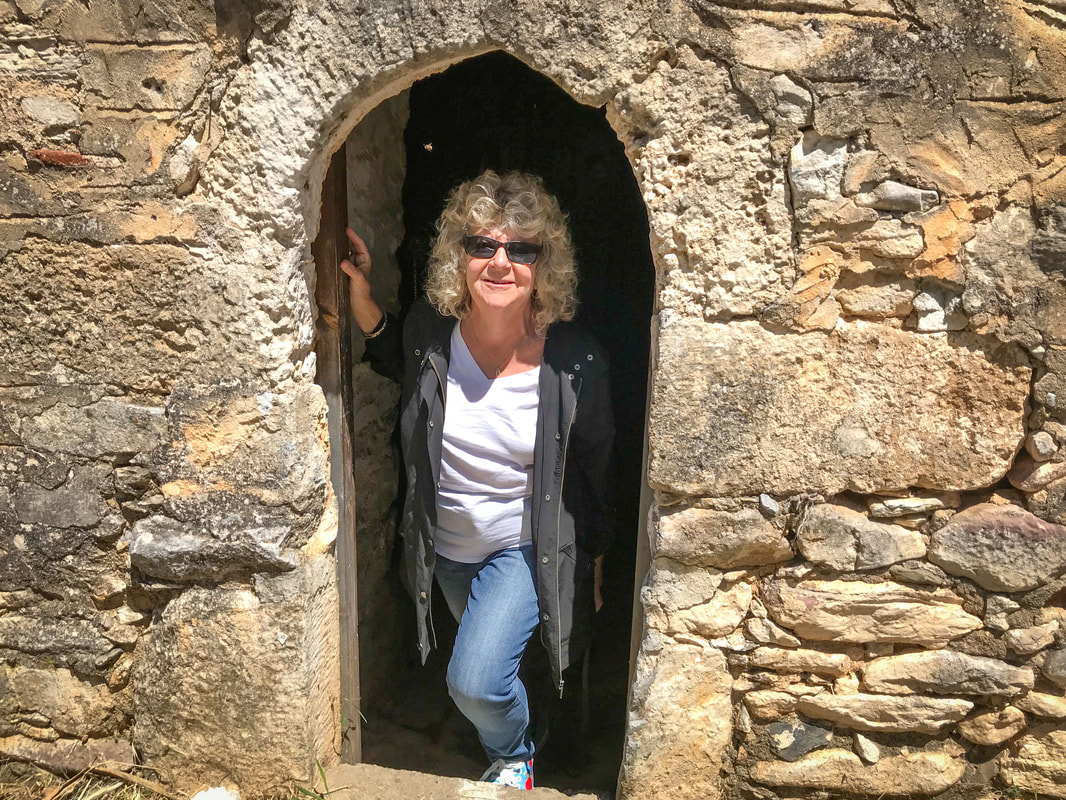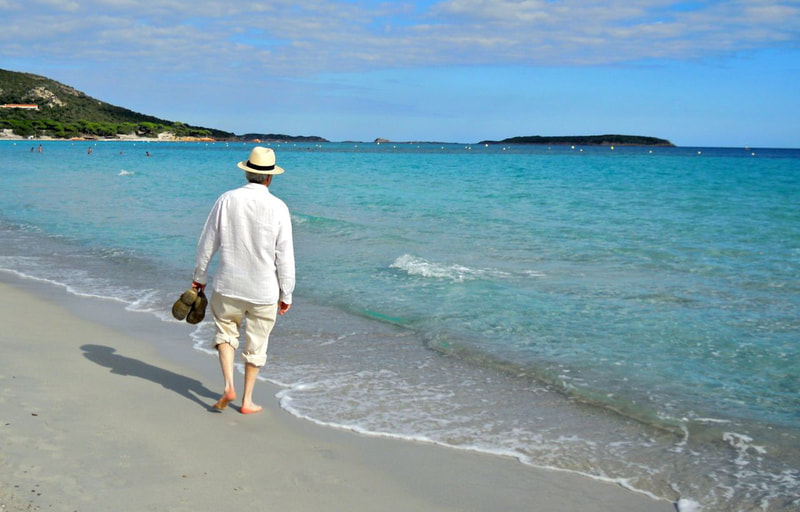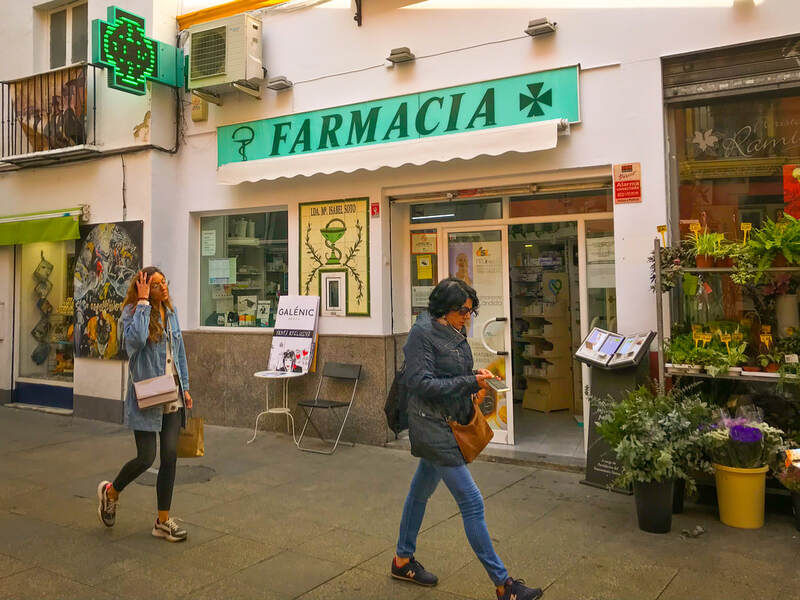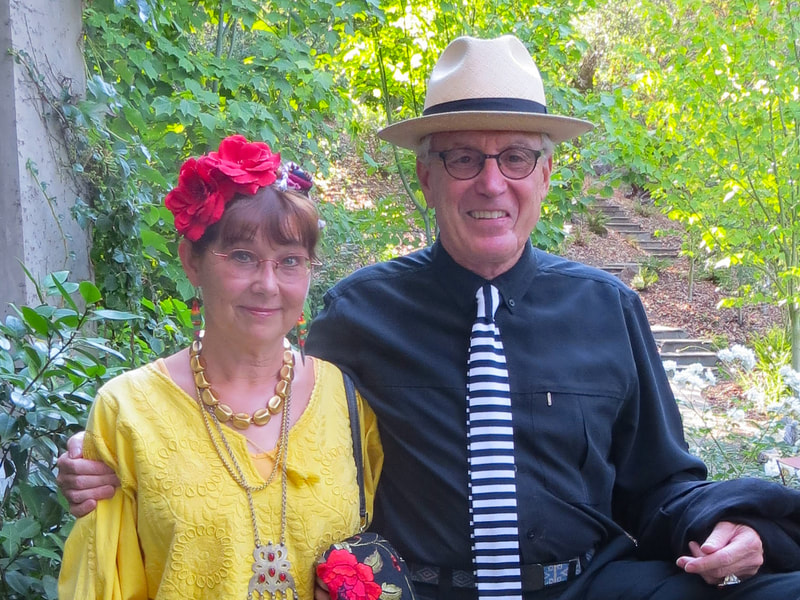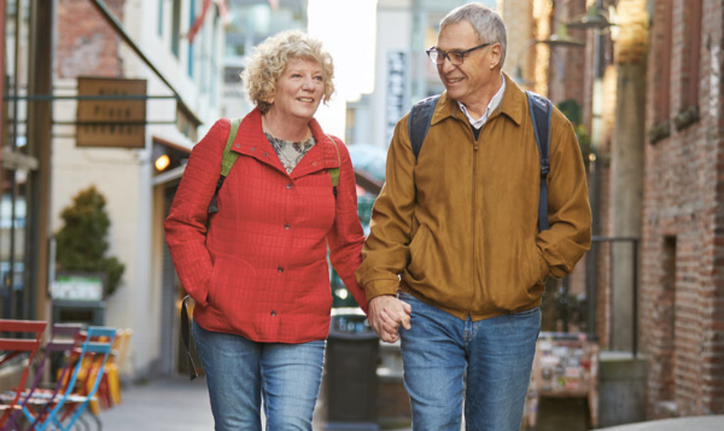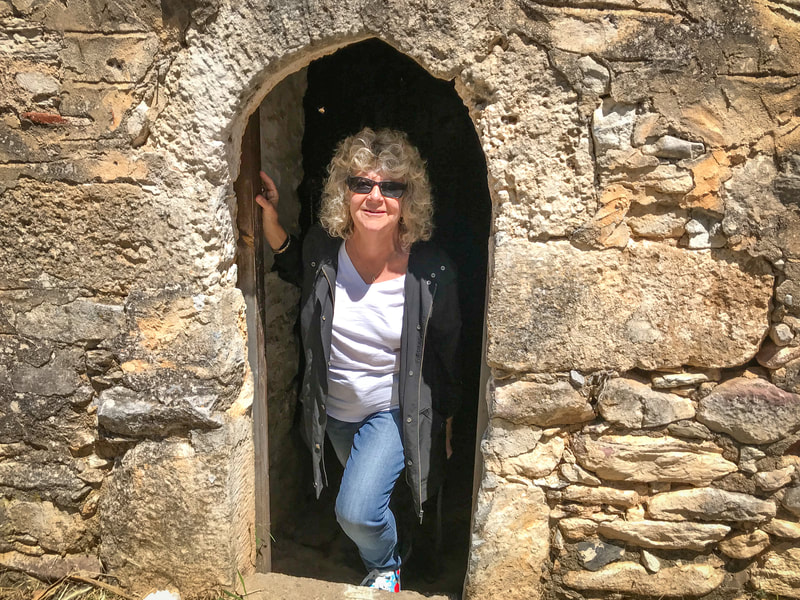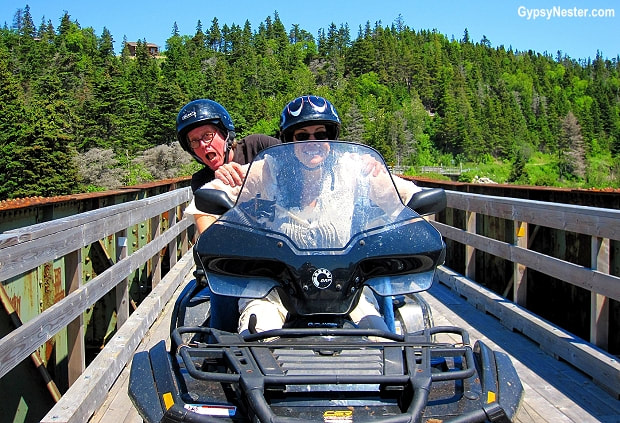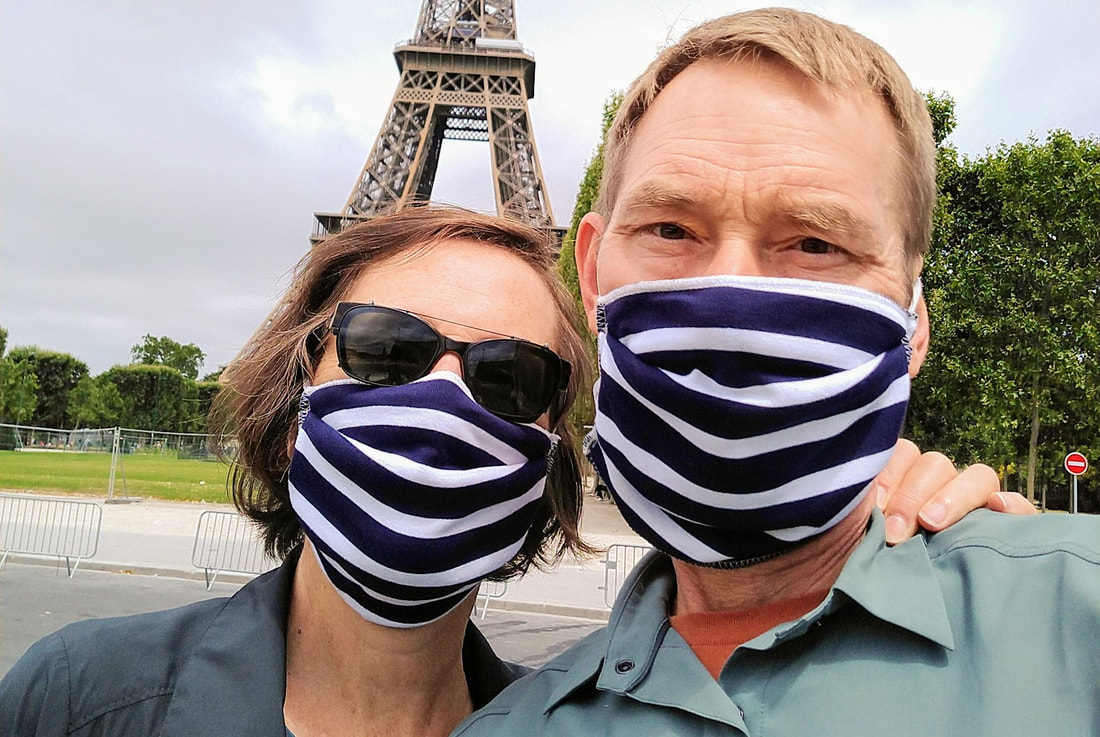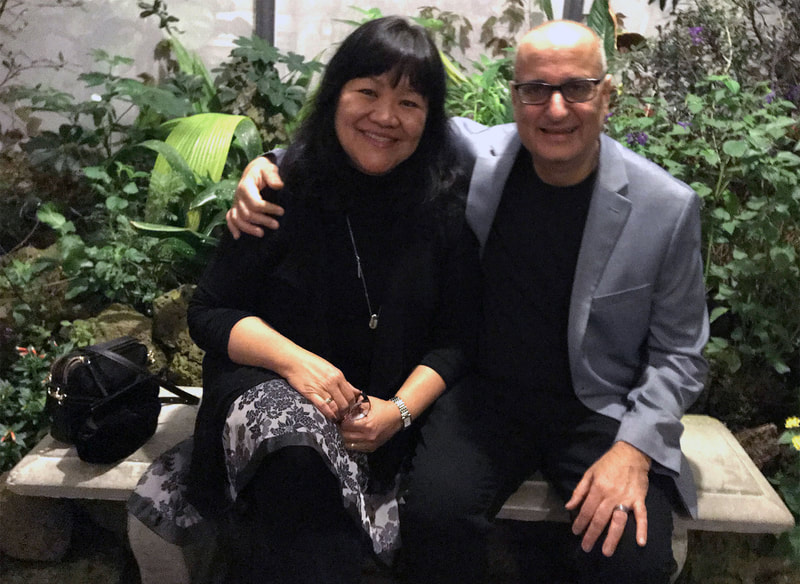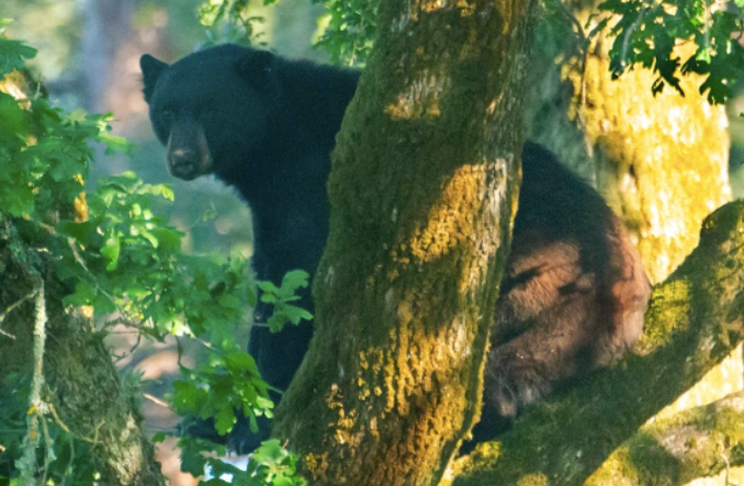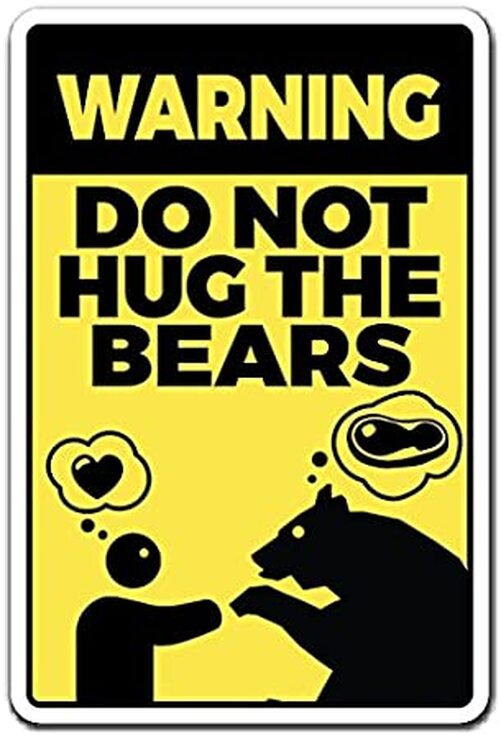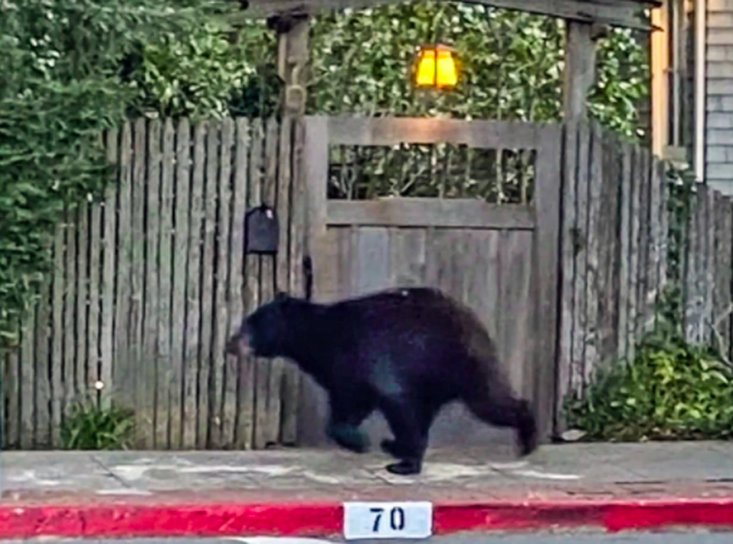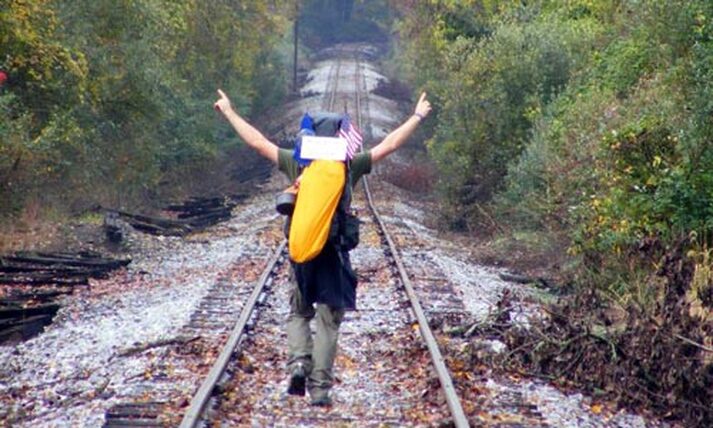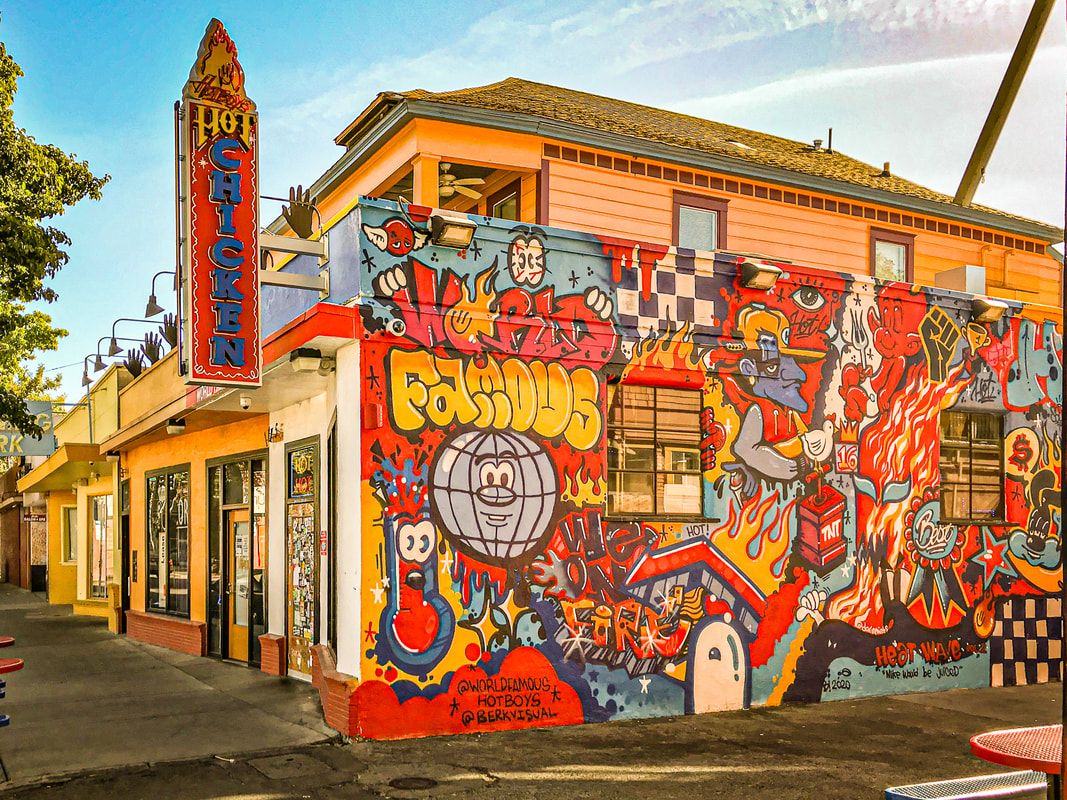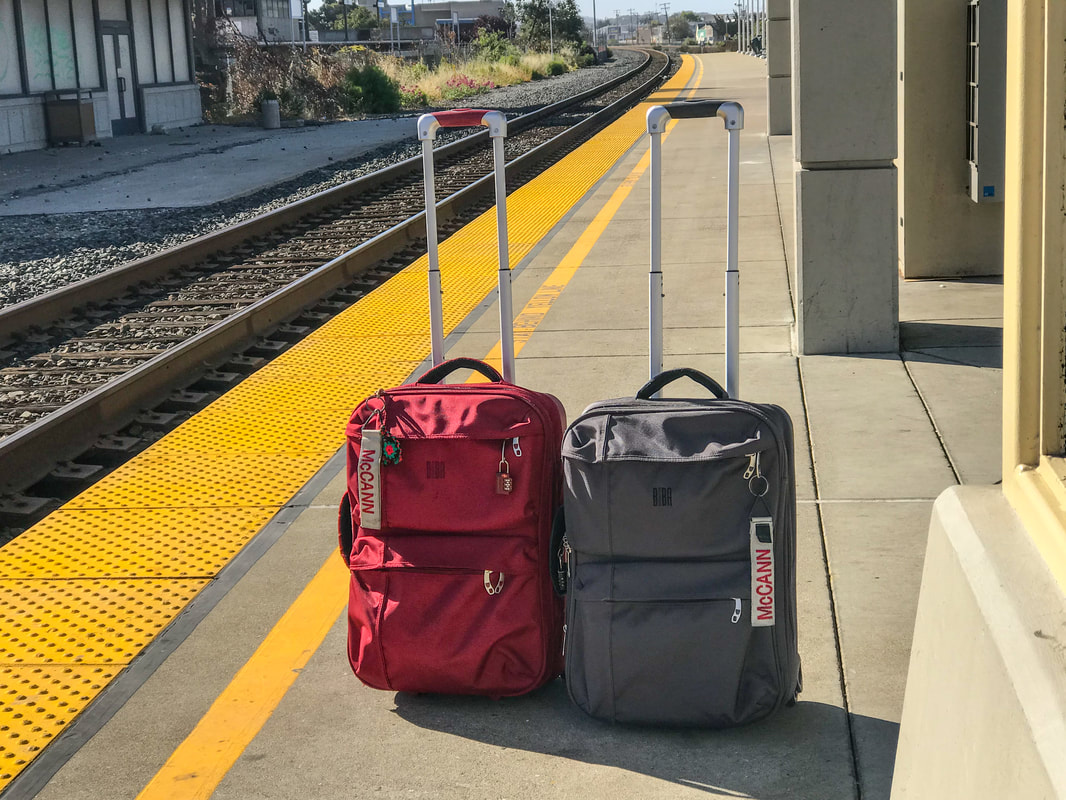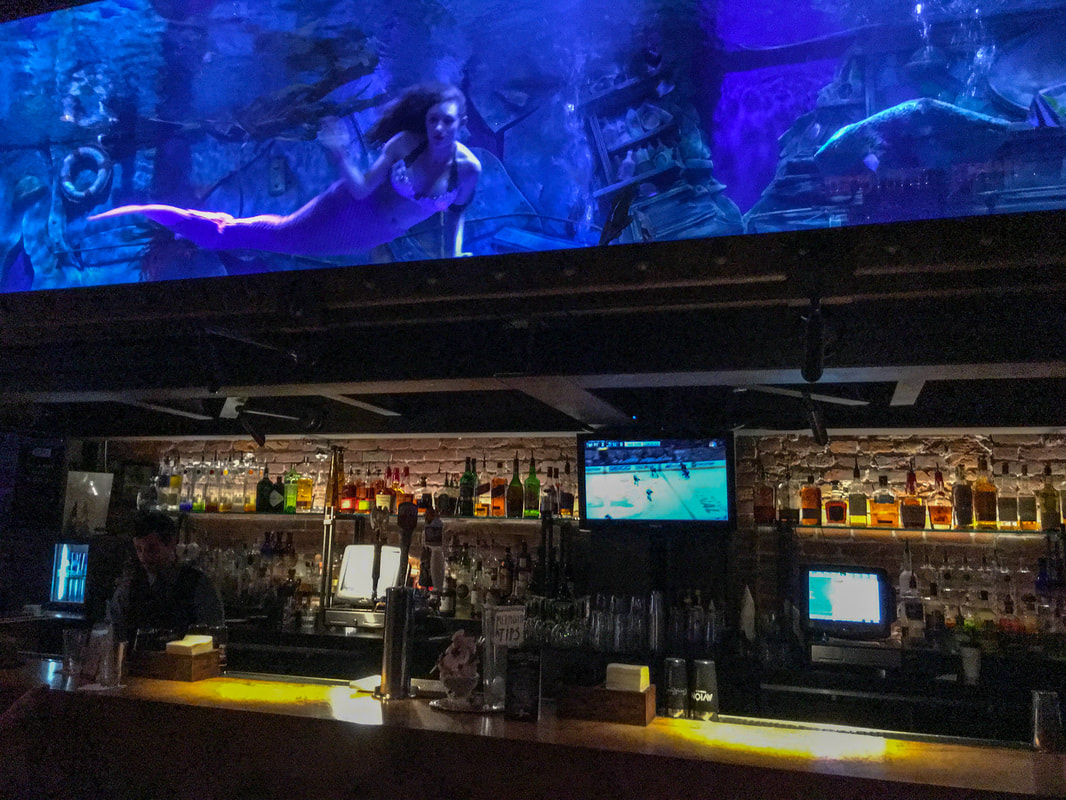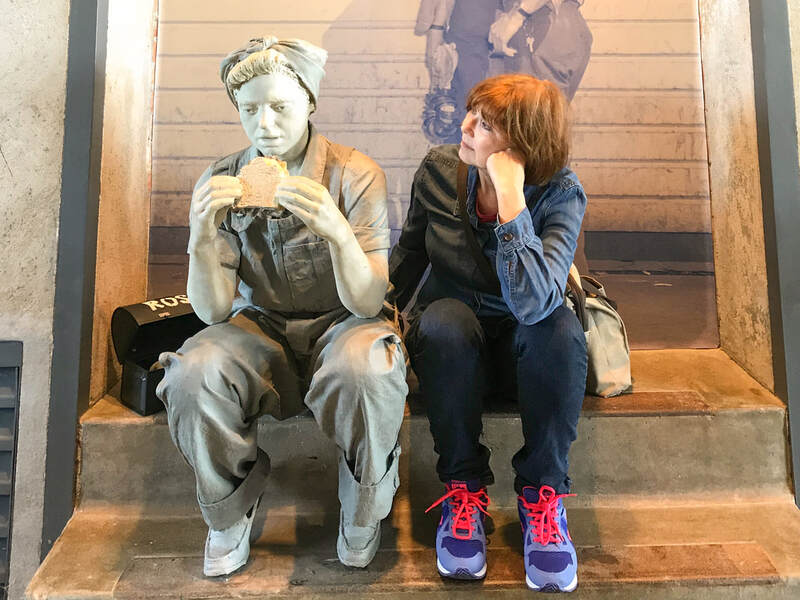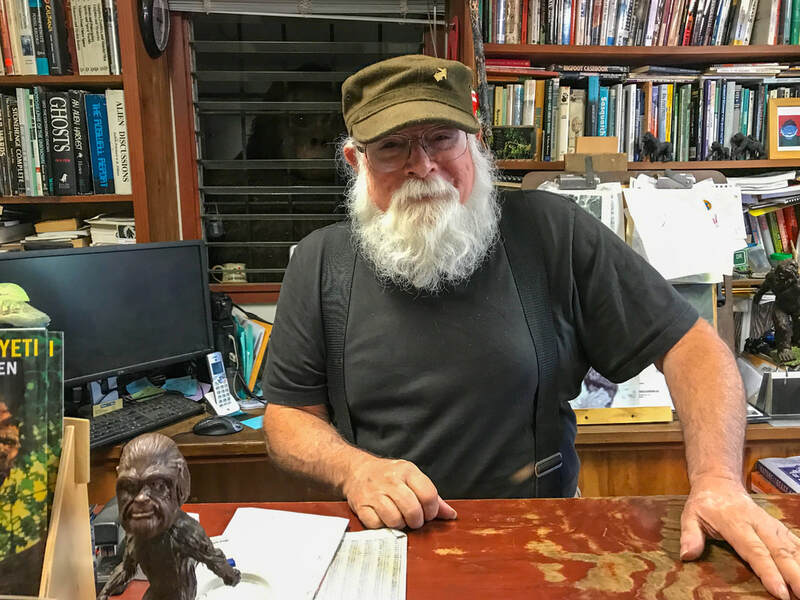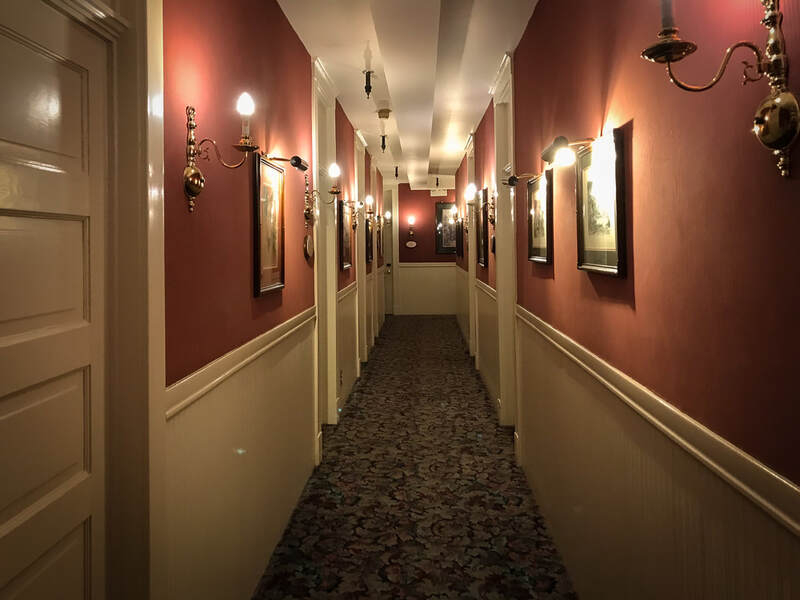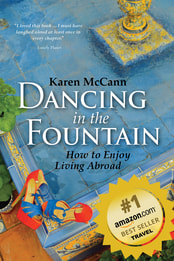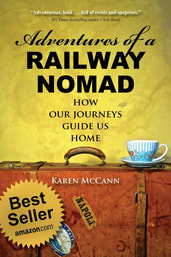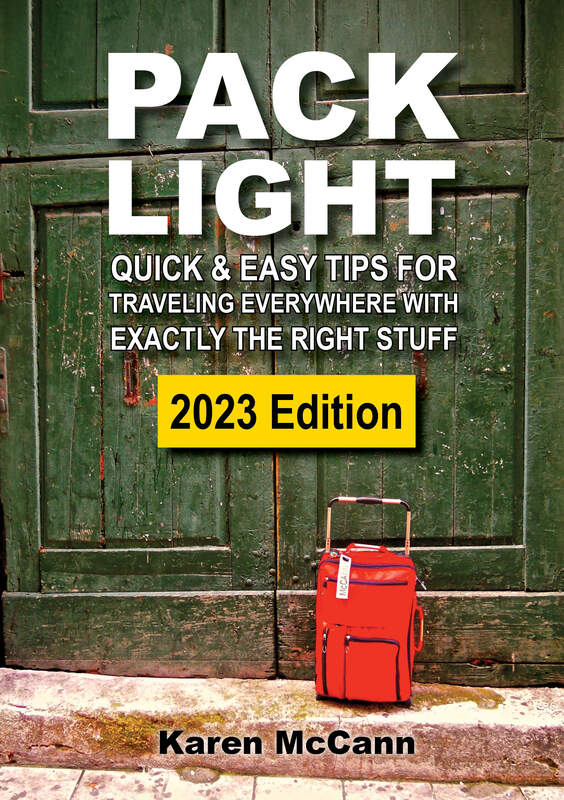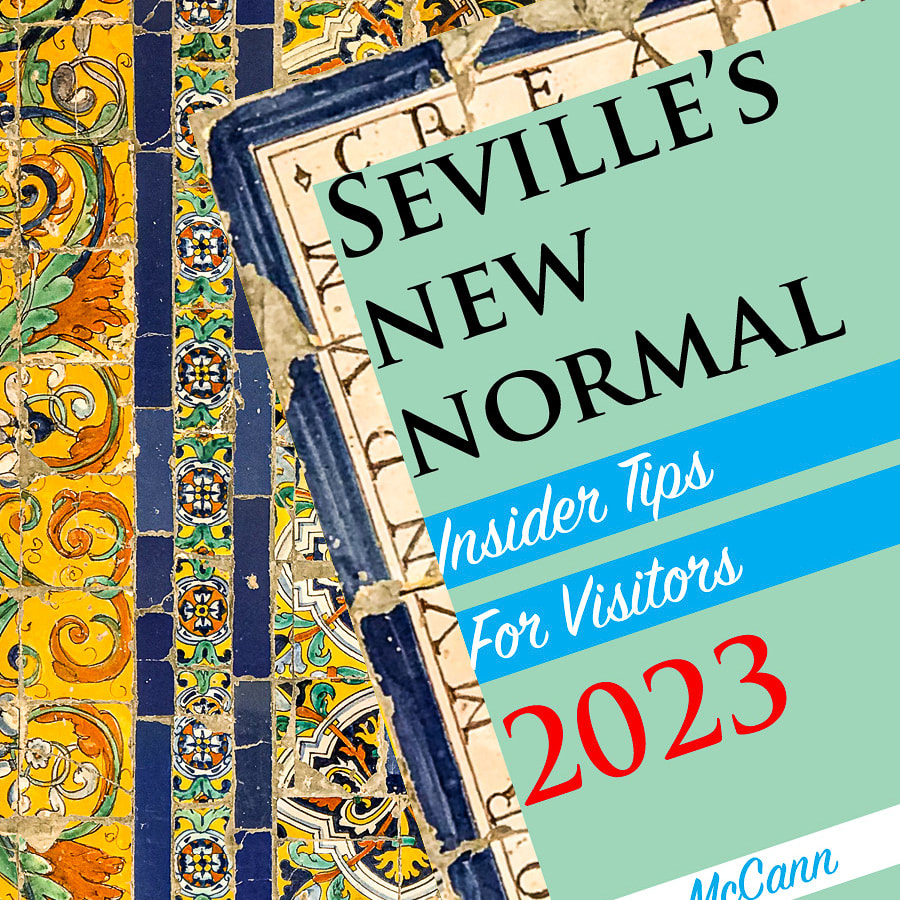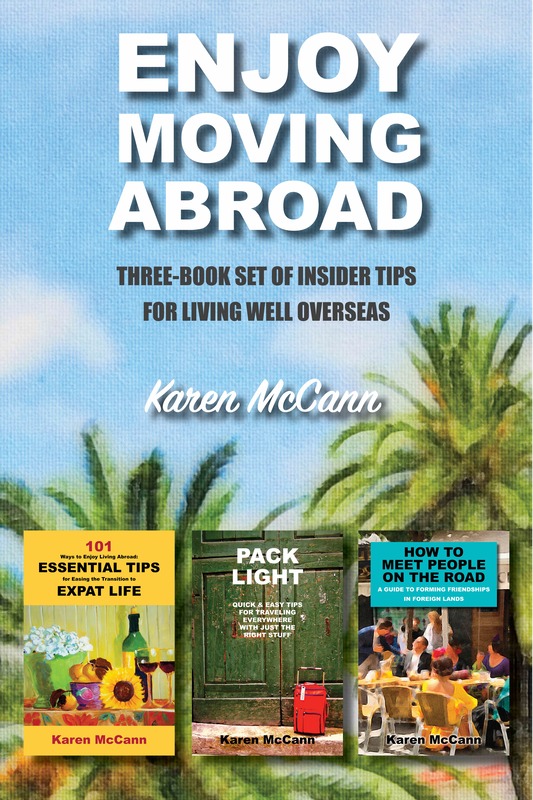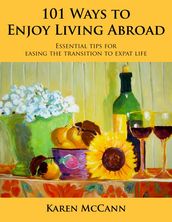|
The great Spar Varnish Debacle started out simply (as these disasters so often do) with an offhand remark over breakfast. “Between the birds and those ghastly berries on the trees,” I said, “our porch railings always look like they have leprosy. Isn't there something we can do?” Paint store experts advised glossier paint; Rich applied two coats, which bloomed with fresh stains before the last brushstroke dried. The hardware store staff suggested spar varnish, a maritime shellac tough enough to repel barnacles. As Rich brushed on the spar varnish, I noticed with alarm that it was going on in great, blotchy, yellow streaks, giving the impression we’d drizzled the railing with maple syrup. After days trying to convince ourselves it didn’t look that bad, we agreed it had to be painted over. Unfortunately, spar varnish doesn’t like to be painted over. Unable to repel the enamel paint outright, it craftily began infiltrating it. Soon our railings were sticky as fly paper; if you touched one, you instantly became adhered to it, and delicate negotiations were required to remove your fingers without leaving behind a layer of skin. Naturally the glue-like surface became a magnet for every bit of dirt, dust, berry, and bird muck around. Normally we’d have ranted endlessly about this to family, friends, and the hardware store guys; we didn’t attend that Grumpiness Seminar for nothing! But the areas of our brains devoted to domestic disasters were, by this time, totally preoccupied with something more urgent. The Beetles-Eating-Our-House Crisis began when a routine inspection revealed this shocking sight. OK, maybe it’s not that shocking at first glance, but look closely at the middle board; can you make out teeny tiny holes in the wood? Kind of like nail holes? Apparently those may or may not be the warning signs of wood-boring beetles at work, either now or at some time in the recent, possibly distant past. “I’m not really sure,” said the inspector. “What do you think?” “I think we need a second opinion,” Rich said. Two sets of exterminators eventually agreed that we had a wood-boring beetle problem that could only be eliminated with considerable effort and staggering expense. Personally, I always feel that asking a guy who’s going to profit from a job to determine whether it’s really necessary is like hiring a lion to decide whether it’s time to cull the antelope herd. Rich, thinking along the same lines, said grimly, “I’m going down there myself.” This may not sound like a big deal, but you have to understand we never, ever go into the dark, cramped underworld that lies beneath the cottage. You can’t call it a crawl space because much of it can’t be navigated on hands and knees; thanks to the labyrinth of pipes, ducts, and tangles of wiring left by various owners over the last 121 years, you have to slither through the dirt on your belly like a reptile, or inch along on your back like Michelangelo painting the Sistine Chapel. Rich prepped for the ordeal by reading about the telltale signs of wood-boring beetles. Apparently they like to burrow in new wood, something that hadn’t been seen beneath our house since it was built in 1900, and they usually produce a frothy white mix of sawdust and excrement known in the bug industry as “frass ” — a term which instantly became a cuss word around our house. Rich spent half an hour inching around the underbelly of the cottage, then crawled out covered with dirt and shaking his head. “I can’t find anything that looks like the exterminator’s picture or that frass stuff we saw online.” Worried he might have missed the single board studded with holes, he descended again and then a third time into the nether regions. Each time, his grim determination was like that of Charles Bronson playing the claustrophobic Danny digging the tunnel out of the Nazi POW camp in The Great Escape. Meanwhile, the exterminators were sending us quotes that made our heads spin and describing our part of the process as “really quite simple” when it was obviously anything but. First, we’d have to remove all edibles (including the contents of the refrigerator, the Apocalypse Chow food locker, and the medicine cabinet) to a safe location off the property. Then we’d need to drag all the potted plants to the far end of the garden; anything planted in the ground around the cottage would have to take its chances, which would clearly be slim to none. Then we'd have to leave for five days so the exterminators could tent our home and pump it full of poison. “Well, frass,” said Rich. In an effort to turn his thoughts to a more cheerful direction, I zeroed in on the upside. “Looks like we’re going on a road trip!” I had the perfect itinerary in mind. As my regular readers will recall, Rich’s Science of Happiness course made us want to visit the world’s happiest countries, starting with the Nordic nations. Now I’m thinking the journey could begin closer to home. The Bay Area includes several top ranking spots in this year’s list of America’s happiest cities, including numero uno, the absolute dark horse in this contest, Fremont. Never heard of it? That’s because, as everyone has been telling us, “Nobody ever goes to Fremont." Is it really Dullsville or are we overlooking something? I'm asking the same question about its near neighbor, the fifth happiest city, San Jose. For culture and glamor it can’t compete with San Francisco (what could?) and most Bay Area residents avoid it as if it were Fremont. I probably shouldn't have been so astonished to learn San Jose, the unofficial capital of Silicon Valley, is now one of the richest and most powerful cities on the planet. Seems like I ought to take a closer look at both cities. Meanwhile, Rich has been in deep consultation with the exterminators, explaining we aren’t convinced we even have beetles, let alone enough of them to require tenting and filling the house with toxins. The exterminator’s attitude is, “Well, if you don’t value your home enough to maintain it properly, don’t blame us if beetles eat the sub-flooring and the whole place collapses into the ground.” I’ll let you know how that conversation turns out. As for the Spar Varnish Debacle, by now the stickiness has subsided considerably, and while the railing will probably never regain its former sleekness, it no longer attaches itself to the unwary. As it happens, while this drama was playing out, we discovered that the berry-dropping, bird-attracting trees were dying and had to be removed, which neatly solved the staining problem. Despite the gloomy predictions of the exterminators, I’m maintaining a positive attitude about the Beetles-Eating-My-House Crisis, too. Because as the saying goes, “A positive attitude may not solve your problems, but it will annoy enough people to make it worth the effort.” Or as the 8th century Buddhist philosopher, Shantideva, said, “If you can solve your problem, then what is the need of worrying? If you cannot solve it, then what is the use of worrying?” YOU MIGHT ALSO ENJOY DOING ANY HOME IMPROVEMENTS THIS SUMMER? Tell me about them in the comments below; I love a good disaster story. CLICK HERE to get my weekly travel tips and swap stories about life on the home front in 2021. SHARE this article with family, friends, and anyone approaching "simple" repair jobs with the attitude, "What could possibly go wrong?" enjoylivingabroad.com/my-blog/when-home-improvements-run-amok
12 Comments
“Look at this one,” Rich said, handing me his phone. “A cabin offering an off-the-grid experience. It’s disconnected from all public utilities, so no phones, Internet, TV — none of the distractions of modern life.” I was hesitant at first but gradually warmed to the idea: an oasis of rustic tranquility in the chaos of our annual family reunion in the mountains of northern California. As the date drew nearer, our friends began asking, with increasing incredulity, what we were thinking. “Yes, it says there’s indoor plumbing,” I kept reassuring them. “Probably a bucket,” replied one. “An outhouse,” said another. “The woods!” suggested someone else. Far more worrying than the bathroom arrangements was the fact our hosts had written urging us to bring insect repellant, which I'd never bothered with in previous years. This time we'd be deeper in the woods, so I ran out and bought three kinds of protection (skin-friendly herbal, high-powered Deet, some clip on thing) and two post-bite soothers. I also bought a new kind of M&M calling itself “Emotional Support Candy.” I thought it might come in handy — and not just for the outhouse and the bugs. For decades, my large, boisterous family has gathered for a week every summer in a small mountain town in the Sierras. We spend lazy days “getting back to nature” on an artificial beach by a man-made lake and take turns cooking huge meals every evening. But mostly what we do is talk. There’s always an abundance of news to exchange, and to save time, my family speaks subtext. For instance, some years ago when asked about a distant relative’s new romantic partner, the response was a shrug, an eye-roll, and “a nice enough guy, kind of quiet.” Which we all understood to mean he was dull as dishwater and unlikely to be around long, so we shouldn’t get attached. If there are three of us in a room there will be five opinions about everything from religion to politics to whether the moon landing ever really took place, not to mention the pandemic, climate change, and the future of bitcoin. So far nobody has tried to convince me reptilian aliens are taking over the government, but every year I wonder when it will come up. “If things get too intense, we may need a way to deflect the conversation into safer channels,” I told Rich. A few minutes later, I remarked, “By the way, did you hear they’re moving Area 51?” “They are?” he exclaimed. “No, I just made that up. But it’s an attention grabber, isn’t it? Maybe I can use the question to deflect any discussion that seems headed toward a conversational landmine. I think we should keep Area 51 in our back pocket. Along with the Emotional Support Candy.” 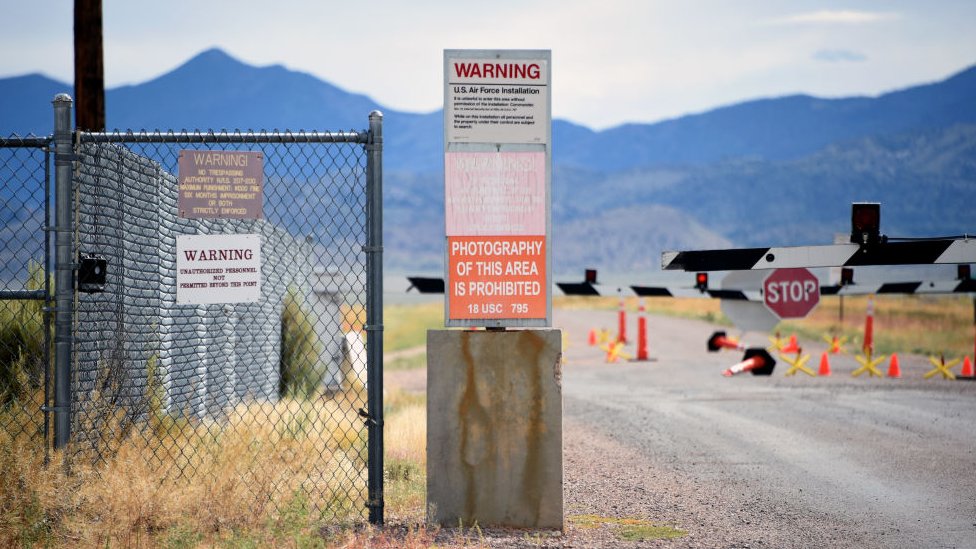 Area 51 is a remote, highly classified US Air Force installation in the Nevada desert. Some say it's where the government is hiding a crashed alien spacecraft, alien artifacts from Roswell, New Mexico, secret meetings with extraterrestrials, time travel experiments, teleportation technology, and weather control experiments. As it happened, our reunion fell on the hottest days of the year, and as the three-hour drive took us across the flat Central Valley, the car’s thermometer registered 108 degrees. Even in the Sierras, surrounded by towering redwoods, temperatures were in the low 90s. I wondered if this was the best time to be renting a cabin with no air conditioning. But then we pulled up at Love Creek Cabin. Built in 1934 and recently renovated by our hosts, Desiree and Jim, the cabin had the original wood shingles and a long porch with a row of comfy rockers and gliders that were perfect for gazing out over the forest and creek. A local woodworker had fashioned thick, wide planks for the floor, and there was slate underfoot in the kitchen and bathroom, which (my naysaying friends will be amazed to hear) featured a flush toilet and a shower with plenty of hot water. There was a big comfy Murphy bed (the kind that folds into the wall), a wood-burning stove, faded rugs, and a red sofa that whispered alluringly, from the depths of its many pillows, “Join me for a siesta?” “This is my kind of roughing it,” said Rich. I realized going off-grid wasn’t so different from how we’d lived for twenty years in Ohio: using well water, a septic system, and natural gas (only here, it was propane tanks). Behind Love Creek Cabin was a shed with a generator that ran for a short time each day to power up big batteries providing a steady supply of electricity, which ran lights, a small fridge, and a fan to keep the air cool. It was all highly efficient and offered a surprising array of creature comforts. Perhaps the most astonishing moment of the entire reunion was arriving at the beach late that afternoon and standing among 17 members of my family and dozens of other beachgoers with not a single mask in sight. The governor had lifted the mask mandate two days earlier, and seeing all those bare faces was surreal, like stepping back in time. Twenty minutes later, after I’d hugged everyone and been handed a glass of wine, someone at the far end of the picnic table called out, “Hey Karen, we’re talking about spiritual beliefs. What are yours?” So much for small talk! During the days that followed, I was drawn into discussions on topics such as “If you could change one thing about how you were raised, what would it be?” and “What’s one thing you can say about yourself that nobody knows?” and “What does it take to have a meaningful life?” Naturally, the conversations occasionally got heated, and once Rich leaned over and whispered to me, “Time to go to Area 51?” Instead, I rose saying brightly, “You’re so right! I promised to help with dessert,” and slipped out of the room, leaving the others to sort themselves out. On the last night some of my relatives stopped by to see the cabin, and after all the kidding we’d taken about roughing it off the grid, it was gratifying to see everyone instantly smitten. “I love it,” said the sister whose rental “cabin” this year included cathedral ceilings, a library, and a billiard table. “I could write here for a year,” said my poet-filmmaker nephew. On our last morning, Rich and I spent a long time in the comfy porch gliders, eating homemade granola and drinking French-press coffee, talking about how lucky we were to grow up in the pre-digital age. We had lived happily for decades without personal electronic devices and found it refreshing now to stop being at the constant beck and call of the entire world, if only for a short while. Packing up, I realized I’d scarcely used the bug spray and never opened the Emotional Support Candy. Like Area 51, they'll be kept on hand for the next time I may have to finesse a delicate situation. I didn’t need them on this occasion, but there's no telling how long can I go on being that lucky. Are you attending any family reunions this summer? Have they changed due to the pandemic? Let me know in the comments section below. YOU MIGHT ALSO ENJOY GATHERING WITH FAMILY & FRIENDS THIS SUMMER? YOU'RE NOT ALONE!
CLICK HERE to get my weekly travel tips and swap stories about what it's like to socialize in 2021. Feel free to copy the link below and share this article with family, friends, and anyone going to a reunion this year. https://www.enjoylivingabroad.com/my-blog/roughing-it-off-grid Did you miss last week's post? Apparently there was a glitch in last week's mailing for some subscribers. If you didn't see the post, please scroll down and check it out now. Every once in a while someone comes up with an idea so brilliant yet so obvious (once I hear it) that I am amazed and chagrined I didn’t think of it myself. Dreaming of retirement and struggling to decide where to go, New York lawyers Gilen Chan and Gene Preudhomme were just getting serious about their research when the pandemic hit. “Gene thought ‘If we can’t visit places, why not let the places visit us?’” recalled Gil. “And the idea of a podcast about retirement cities was born.” “I have always thought Gil had a voice and presence for radio,” says Gene. “Beginning several years ago, we started considering where we might retire. Once Covid hit, I had the idea of Gil hosting a podcast about places to retire. Although I have the face but not the voice for radio, Gil insisted that she would not do it alone. So here we are.” They spent the summer of 2020 developing plans for their weekly podcast, Retire There with Gil and Gene. When it launched in November 2020 it focused on domestic locations, but gradually they began adding international guests, and this week's interview is with (drumroll please!) Karen and Rich McCann. When they approached me about the interview, I thought, “Spend time talking about how great it was to move to Seville? I can do that for hours. Just ask any of my friends, relatives, or bartenders!” Rich thought it sounded like fun, and soon we found ourselves in a long Zoom call with Gil and Gene, chatting like old friends. Click here to listen to the podcast, Retiring in Seville, Spain with Karen and Rich McCann. Afterwards, I asked if doing dozens of interviews has helped them narrow down their own list. Gil admitted they are no clearer about their dream destination than when they started. In fact, “This information overload has made our relocation decision more difficult.” “We have conducted over thirty-five interviews and many of the locations sound great,” added Gene. “However, I am hoping that once we hear about the place for us, it will be obvious and beyond exciting. Like the first time I met Gil, I knew she was the one.” I asked what helps people find the right spot. “First, do your research, carefully,” said Gil. “Second, test-drive the location for at least a month, if possible. Third, do not feel trapped! You can always move again if this place did not turn out to be what you envisioned.” What are the biggest worries about retirement? “Finance is, by far, the number one concern,” Gene said. For those trying to figure out how far your money will go, “Some helpful sources include Market Watch, US News & World Report, International Living, blogs, social media blogs, such as Facebook’s group titled “Where to Retire,” etc.” Future retirees, said Gil, have to ask themselves plenty of practical questions. “Do they have enough to live on? Have they saved enough? Can they afford to retire before becoming eligible for Social Security? If they retire before becoming Medicare-eligible, and their former employers do not provide healthcare insurance for the gap years, do they have enough funds to remain in their current location? Some of our guests lived in areas they could afford while they were employed but not after. This last issue is what prompts many people to move abroad. The options of living in foreign countries are endless! And attractive!” (I should mention that Medicare doesn’t cover you when you’re abroad; you’ll need some other insurance. Luckily international policies tend to be far less expensive than American equivalents.) “Beyond money,” said Gene, “the concerns run the gamut. Some people are greatly concerned about healthcare, while others say they are in great physical condition and healthcare played no part in deciding where to retire. Politics have been of great concern for many of our guests. Some will only live in a blue state, while others will only live in a red state. Some want a variety of outdoor activities and arts, others will only live in any area where it will be convenient for them to play golf every day.” Selecting the venue is the toughest thing to get right, notes Gil. “There are an overwhelming number of places with which to choose and if you factor in other criteria, such as the importance of being near family, it changes your options. One may find their fantasy location to be Portugal, but if that hinders your ability to see family more than once or twice a year, you may need to re-order your wish list. Expect to make compromises.” When asked how couples can navigate disagreements, Gene said, “Surprisingly, most did not seem to have major disagreements. For many of our guests, retirement calmed them. After retirement, they were less likely to start arguments and a number of guests lost significant amounts of weight.” “Retirement is a significant event in and of itself,” Gil pointed out, “and retiring elsewhere is another enormous act. The best advice we’ve heard on the issue is this: couples need to recognize that their lives may markedly change at this point, i.e., a spouse who always worked outside the home may develop new habits post retirement that may surprise or annoy the other person. Recognize and acclimate yourselves to this new life. Make sure both parties find things they like in the new venue.” Gil and Gene don’t seem too worried about disagreements arising over their own retirement. “In general, we are similarly minded, in that we share the same values,” said Gil. “We respect and enjoy each other’s company. The podcast has solidified our decision to relocate after retirement. It would be foolish to stay in NYC when the dollar will go sooooo much further elsewhere, allowing us to live the way we’ve dreamed.” “We want a less congested place where we can enjoy nature,” added Gene. “We love New York City and its people, some of them, but the world is large and we seek to enjoy more of it.” Just thinking about retirement opened up whole new worlds to Gil and Gene. “The podcast has been a godsend, an absolute brilliant surprise, thanks to Gene,” said Gil. “We have been in our professional legal careers for over 25 years and it has created new excitement and unexpected, intellectually satisfying achievements. We are producing a show! Who knew?” By the end of our conversation, Rich and I were inviting Gil and Gene to come see us in Seville before they make any final decisions about their own retirement. They would be a welcome addition to the city’s expat community and fit right into the vibrant social life that’s such an integral part of Spanish culture. But whatever their final destination may be, we can all be grateful that for now they are providing future retirees with practical ideas about hitting the reset button on their lives and having a grand time doing it. OFF WE GO This week Rich and I are heading to a family reunion in the mountains and will be staying in a cabin that's off the grid — meaning no electricity, phone service, TV, or wifi, although there is a generator and indoor plumbing. The owners keep reminding us to bring insect repellant. You'll hear more about all this in my next post. Just wanted you to know why we'll be off email and social media for a bit. YOU MIGHT ALSO ENJOY HOW'S YOUR SUMMER SHAPING UP? STAY IN TOUCH!
CLICK HERE to get my weekly travel tips, catastrophe updates & comfort food recipes. Feel free to copy the link below and share this article with family, friends, and anyone who may be thinking about where to retire someday. https://www.enjoylivingabroad.com/my-blog/where-to-retire-one-couple-has-the-inside-scoop Rich never bursts through the door when I’m taking my sister’s online yoga class, so I knew something was up even before he said, “I thought you should know I’ve just gotten an emergency alert. Town officials are telling us to lock our doors and windows and shelter in place. Something’s going down.” Instantly my mind flooded with hideous possibilities: terrorist attack, chemical spill, kidnapping, sniper, some vicious new Covid variant soon to be known as the San Anselmo Plague… “OK,” I said, continuing my cat-cow backbends and trying not to hyperventilate. “Let me know if you hear more.” Half an hour later, all was revealed: A 250-pound black bear was up a tree in our neighbor’s yard. As you can imagine, every game warden, cop, firefighter, and public official within twenty miles rushed to the scene; nobody wanted to miss out on the hottest happening around here since the Great Flood of 2005. The bear soon gave up all hope of a quiet siesta, climbed down the tree, ambled back through the neighborhood, and disappeared into the woods. Town officials texted residents to say it was safe to emerge from our shelters, then immediately addressed everyone’s most pressing concern: “The bear is fine.” The next morning officials sent out an advisory about bear-proofing our homes. “It says we should keep our trash bins in the garage and our pets indoors at night,” I told Rich at breakfast. Not having a garage, or any pets, we agreed to ignore this advice. “It also says that if the bear gets into our house, we should not engage with it. What do they think we’re going to do, ask it what it’s watching on Netflix these days? They also suggest leaving immediately. Good to have a professional opinion on that! Hmmm, do you think we should distribute jars of honey around the house, in case we have to distract the bear while we make our escape?” In an ordinary year, I’d scoff at the idea that the bear, now named Archie, would return to our neighborhood, let alone invade our kitchen. But these days it’s hard to predict what wildlife will do. Their habits and habitats are so thoroughly disrupted by climate change, drought, wildfires, and human routines upended by the pandemic that you might wake up any morning to find coyotes, bobcats, wild turkeys, even peacocks foraging in your backyard. Last month in Tehachapi, Carol Mickols returned from a weekend getaway to find more than a dozen giant condors, an endangered species with nearly 10-foot wingspans, living on her porch — and willing to fight for their right to remain. The condors eventually took off, but encounters between humans and wildlife continue to make headlines. On Memorial Day, Bradbury teenager Hailey Morinico saw a bear threatening her dogs and instinctively ran forward to shove the bear over a wall. The only reason she survived the encounter is because her actions were so insanely foolhardy the bear was too flabbergasted to respond. Strange wildlife visitations lend post-apocalyptic drama to the landscape, but they're the least of my householder worries right now. Two weeks ago, after the driest winter in 140 years, county supervisors declared a drought emergency and asked residents to reduce water consumption by 40%. Rich sprang into action researching how to use greywater — the relatively clean runoff from sinks, showers, and washing machines — to protect his beloved garden and our trees, some of which are already dropping leaves at an alarming rate. He spent weeks calculating usage (shower: 17 gallons; washing machine: 19 gallons; dishwasher: 3 gallons) and working out how to collect the runoff using a network of pipes and a large rain barrel. Meanwhile we have a bucket in the shower to capture the water while it heats (2.5 gallons) and another bucket in the sink for non-soapy rinse water. Our first setback was realizing the plants receiving kitchen water looked increasingly morose. We naturally blamed soap contamination but eventually discovered it was stray cooking oil; apparently greasy water is more detrimental to plants than a little mild detergent. Who knew? But the big blow? Turns out it’s illegal to collect greywater in barrels due to smells and worrying bacteria. You have to release greywater directly into the soil via a vast network of underground perforated PVC pipes, which would require tearing out our entire garden, our little brick patio, and who knows what else. Ballpark cost: $3000. Loss of Rich’s sanity watching 15 years gardening effort destroyed: incalculable. So we’re sticking with the buckets for now. Officials are also encouraging us to conserve electricity in hopes of keeping those pesky blackouts to a minimum this summer. “Maybe this is the year we install solar panels on the roof to power the house — and that electric car we keep talking about,” said Rich. After weeks of research, he reported, “Looks like installing solar will mean replacing the electrical panel. That requires tearing out all the knob-and-tube wiring, so we’d have to pull off sections of the bead-board walls throughout the house, and then replace and repaint. We’d also have to buy new electrical appliances: furnace, stove, oven, and hot-water-on-demand system. Given how little energy we use now, we probably wouldn’t save anything on utility bills. But we would have enough energy to recharge an electric car if we decide to go ahead and get one.” “How much would all that cost?” “I’m not sure I can count that high without getting a nosebleed.” “What happens if we just use the township’s electric vehicle recharging station?” I asked. “It can’t be more than 150 feet from the house. If we ever had to, we could push the car over there.” “Then we don't have to do any of this.” So that’s where that stands. These days I feel like I’m living on the edge, always preparing for the next catastrophe, and the next, and the one after that. I’ve got a constant, low-grade case of the collywobbles — an old-fashioned expression for anxiety, often accompanied by queasiness. Perhaps that's our natural state. Back in the 1950s they told us America had made the world safe, and I somehow expected the feeling to last. But looking back over human history, it’s clear the only time we haven’t been on the edge of a catastrophe is when we’ve been in the middle of one. And that goes double for our animal cousins. Most bears are solitary animals, always struggling to find their next meal, hunted since prehistoric times for their meat and fur. When winter hibernation is over, the safest they’re likely to feel is resting in the arms of a sheltering tree. I can imagine Archie’s sentiments when he woke from his siesta to discover he was surrounded by first responders, many with tasers, guns, animal tranquilizers, and itchy trigger fingers. I picture him afterwards, texting that teenager’s bear: “You’re right, humans are nuts! But hey, any one you can walk away from.” YOU MIGHT ALSO ENJOY HOW'S YOUR SUMMER SHAPING UP? STAY IN TOUCH! CLICK HERE to get my weekly travel tips, catastrophe updates & comfort food recipes. Feel free to copy this link and share this article with family, friends, and anyone living in a danger zone. https://www.enjoylivingabroad.com/my-blog/bear-proofing-our-house-other-reasons-ive-got-the-collywobbles What do you think of California? Frank Lloyd Wright embraced the continental tilt theory that everything loose rolls to California. (True enough.) Truman Capote sneered, “It’s a scientific fact that if you stay in California you lose one point of your IQ every year.” (False, I hope.) Author Edward Abbey said, “There is science, logic, reason; there is thought verified by experience. And then there is California.” But as a fourth generation Californian whose family arrived by covered wagon back in the day, I feel the best description comes from Mark Twain’s Roughing It. “It was a splendid population — for all the slow, sleepy, sluggish-brained sloths stayed at home — you never find that sort of people among pioneers — you cannot build pioneers out of that sort of material. It was that population that gave to California a name for getting up astounding enterprises and rushing them through with a magnificent dash and daring and a recklessness of cost or consequences, which she bears unto this day — and when she projects a new surprise the grave world smiles as usual and says, ‘Well, that is California all over.’” To this day my home state remains a dizzying mix of can-do and anything-goes, a living embodiment of the saying “If you’re going to do something, you might as well go too far.” Last Friday I was gobsmacked to discover this was true of The California Museum as well. It was my first visit, and knowing the museum was partly sponsored by state funds, I assumed I'd find a pious whitewash of our checkered past. Instead it showed the good, the bad, the ugly, and the outlandish boldness for which the state is famous. But before I get into that, I would like to pause and point out that the really astounding part of the story was finding myself actually standing there, in our state capital Sacramento, on my first road trip in over a year. Ever since Rich and I made the harrowing journey from Seville to California on May 18, 2020, we’d hunkered down in our San Anselmo cottage feeling lucky to be alive and determined to do whatever we could to stay that way. I actually slept in my own bed for 373 consecutive days — a lifetime record! But with 51% of the state fully vaxxed, and our governor declaring June 15 the end of mask mandates and the reopening of just about everything, even my paranoia is crumbling fast. When four friends suggested a two-night excursion to Sacramento — aka The Big Tomato, The City of Trees, and Farm-to-Fork Capital — Rich and I decided it was finally time to drag our suitcases out of the attic and venture further afield than our backyard and the local supermarket. We headed northeast on a train so sparsely occupied that we found ourselves in sole possession of the California Zephyr’s roomy observation car. Arriving in Sacramento was like walking into one of those sci-fi movies where everyone’s been vaporized by aliens, leaving just a pitiful remnant of humanity wandering the Earth. We hardly saw a soul as we ambled along the broad, tree-lined streets, admired the handsome Capitol grounds, and meandered past sweet old bungalows and stately Victorians. Restaurants, shops, and museums were mostly open; often we were their only customers. Their proprietors and staff could hardly have greeted us with more enthusiasm if we actually had been the last humans on the planet. Sadly, the Dive Bar featuring professional mermaids (yes, I mean women dressed as mermaids) that Rich and I visited in 2016 was closed due to Covid. And the once-famous Zombie Walks died out somewhere around 2017. When I broke the bad news to our group a few days before departure, Pete replied, “No mermaids? No zombies? Why bother?” Even without those attractions, we managed to find plenty to occupy us, including the Railroad Museum, dinner on the deck of the Delta King riverboat (now a haunted hotel), and a Local Roots Food Tour culminating in what was possibly the best gelato I’ve ever had (yes, even compared to Italy’s). We had drinks in the Citizen Hotel’s Scandal Lounge, it’s dark corners and old-school furnishings artfully arranged to make us feel like corrupt politicians making shady deals with nefarious characters. Full disclosure: we stayed at the Citizen and didn’t see anyone who appeared the slightest bit nefarious. Very disappointing, obviously. Our last stop was The California Museum, where we were greeted by a large wooden bear wearing a mask (which will presumably be ceremoniously removed on June 15). I became immersed in exhibits about the contributions and hardships of Asian Americans in my state, and that’s when things got very real. I grew up hearing stories about the abuses heaped on Chinese railway workers and later upon Japanese Americans interned in concentration camps during World War II, but standing in front of those displays, I grew increasingly sad and ashamed. I read the first-person stories, saw a recreation of the pitiful cramped barracks in the internment camps (where a good friend of mine spent her teenage years), and absorbed the full details of the xenophobic laws defining Asian Americans as second class citizens. Employers exploiting foreign workers encouraged racism in the community, laying the groundwork for generations of prejudice and today’s Asian hate crimes. On one wall was a video of George Takei, known to Star Trek fans as Mr. Sulu, helmsman of the USS Enterprise. “I am the grandson of immigrants from Japan who went to America, boldly going to a strange new world, seeking new opportunities. My mother was born in Sacramento, California. My father was a San Franciscan. They met and married in Los Angeles, and I was born there,” he says. “I spent my boyhood behind the barbed wire fences of American internment camps.” Still reeling from those images, I found myself in an exhibit inviting me to become a “unity activist.” What’s that, you ask? It’s about celebrating diversity, organizing the community to protect human rights, and defending the value all people. Amen to that! There were photos of Native Americans occupying Alcatraz fifty years ago, the protest that led to the Americans with Disabilities Act in 1990, and people who, like the grumpmaster I wrote about last week, refuse to be defined by their gender, ethnicity, or physical appearance. Fairly radical stuff for a museum that’s partly funded by taxpayer dollars! I had my photo taken holding a poster about equality, proud to take my place as a permanent part of the unity activist exhibition. All in all, we had a grand time in Sacramento, even if we didn’t see the Delta King’s ghost, hobnob with nefarious politicians, or encounter large numbers of fellow humans. After June 15, I expect things will get livelier. In the meantime Rich and I are busy planning other road trips to visit family in various parts of the state. Up to now I hadn’t considered a detour to Lake Tahoe, but I might have to revise that. “Three months of camp life on Lake Tahoe,” wrote Mark Twain, “would restore an Egyptian mummy to his pristine vigor, and give him an appetite like an alligator.” I can’t think of a better way than that to jump start post-pandemic life, can you? YOU MIGHT ALSO ENJOY THINKING ABOUT TRAVEL THIS SUMMER? STAY IN TOUCH!
CLICK HERE to get my weekly travel tips, pandemic updates & comfort food recipes. Feel free to copy this link and share this article with family, friends, and anyone who will be emerging from pandemic conditions into the larger world. https://www.enjoylivingabroad.com/my-blog/our-first-road-trip-in-a-year-the-big-tomato |
This blog is a promotion-free zone.
As my regular readers know, I never get free or discounted goods or services for mentioning anything on this blog (or anywhere else). I only write about things I find interesting and/or useful. I'm an American travel writer living in California and Seville, Spain. I travel the world seeking eccentric people, quirky places, and outrageously delicious food so I can have the fun of writing about them here.
My current project is OUT TO LUNCH IN SAN FRANCISCO. Don't miss out! SIGN UP HERE to be notified when I publish new posts. Planning a trip?
Use the search box below to find out about other places I've written about. Winner of the 2023 Firebird Book Award for Travel
#1 Amazon Bestseller in Tourist Destinations, Travel Tips, Gastronomy Essays, and Senior Travel
BLOG ARCHIVES
July 2024
CATEGORIES
All
|
